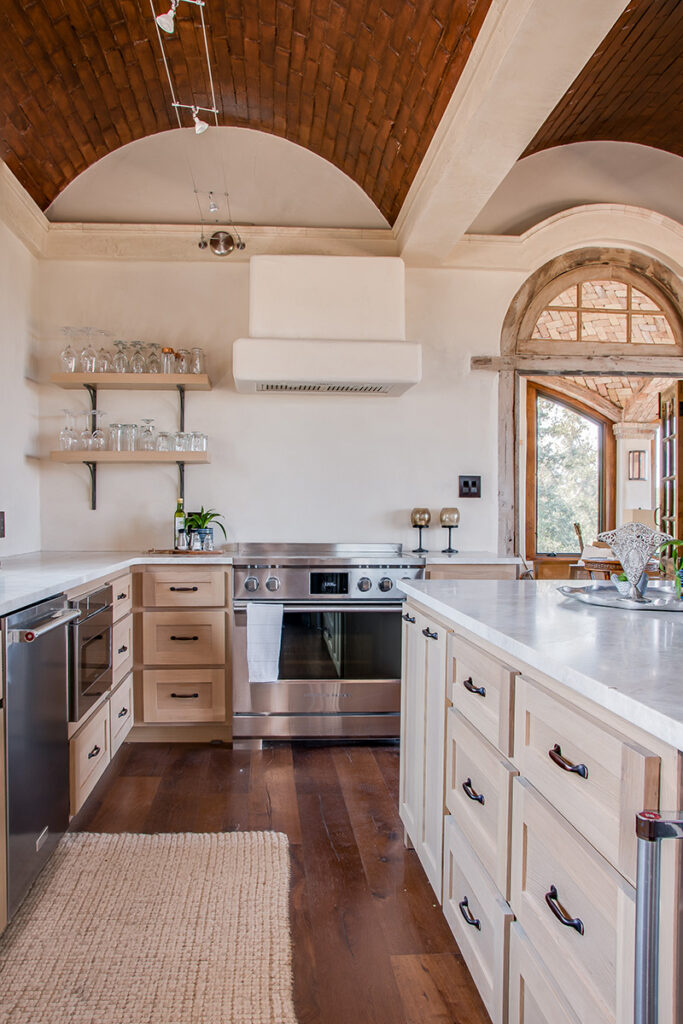A few years ago Carson and Ann Dickie had a fire at their home outside Fredericksburg. It ended up being a complete tear-down. Not long afterward, they bought land in Willow City. They didn’t have a plan for exactly what to build until Carson attended Fredericksburg’s former Renewable Energy Roundup and Green Living Fair. That’s where he was introduced to building with earth blocks. He then connected with Jim Hallock, the foremost expert on earth block construction. “What Jim says is earth blocks are bulletproof, fireproof. I have to say that the fire probably did play into it,” Dickie said.
But at first, his wife thought he was crazy. “Ann thought this was my midlife crisis. I told her, ‘I’m past midlife,’” he said. “Now she thinks it’s wonderful.”
Dickie was intrigued that the blocks are made of a material we have in abundance — plain ol’ dirt. “We have a lot of dirt. We don’t have to cut down trees or mine for metal,” he said. “It’s fun to build with something like that.”


Dickie was able to get dirt for the bricks from an old gravel operation near his property, and the dirt had a lot of granite. Making the bricks is a process of combining dirt with enough water to make a moist mixture, then putting the mixture into a mold, and a hydraulic press smashes it into block form. From there the sun does the work, letting the blocks cure for a couple of weeks. A slightly wetter slurry forms the mortar to hold the blocks together.
“They were the hardest blocks Jim ever tested because of the granite composition,” Dickie said. “But they’re still able to breathe, and that makes for breathable walls.” That breathability helps maintain a pleasant temperature inside, whatever the heat index. “The heat moves through the wall, but never gets all the way through before night comes,” he said.
Dickie says they decided to build something that would be a gathering spot for their kids and grandkids, as well as for friends and small groups they lead. He also wanted a structure that still looked like the Hill Country. “Not ostentatious,” he said. “I wanted something that sits on the land and looks like it belongs. We have lots of people out here, host events. I can’t justify this place sitting out here just for us.”
The Dickies have a wildlife exemption, with natural plants and grasses that attract the animals native to the area. “We cut the young cedar that fires would have taken out naturally in the past. Left the old-growth cedar for the Golden-cheeked warblers. They need to pull off the bark to make their nest,” he said. “The Black-capped vireo — it nests 18 inches off the ground in old-growth cedar.”


Dickie spent his career as an oil and gas man, but he became interested in sustainability through his board service with a Christian international conservation organization called A Rocha. Through them he got involved with a project at Big Springs Ranch for Children in Leakey, a campus of Hill Country Youth Ranch. Dickie helped manage the environmental aspects of the more than 7,000-acre ranch.
He says he could have made the house on his 20-acre property more energy efficient, but he wanted big windows. “I want people to look at God’s creation out there,” he said.
Dickie hopes more builders and subcontractors get the training to become proficient at building sustainably.
“If everyone built like this, we could change the world,” he said.


